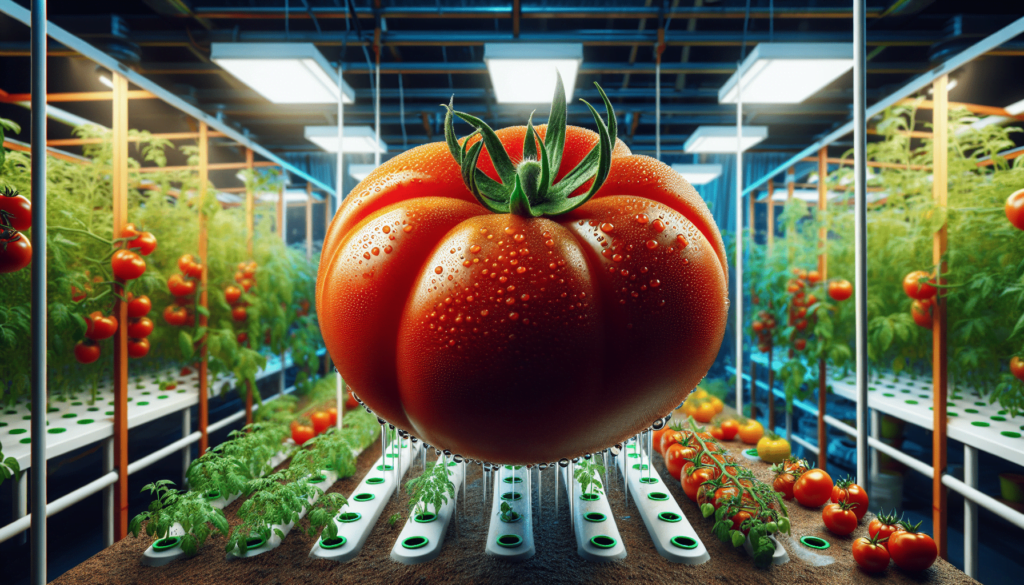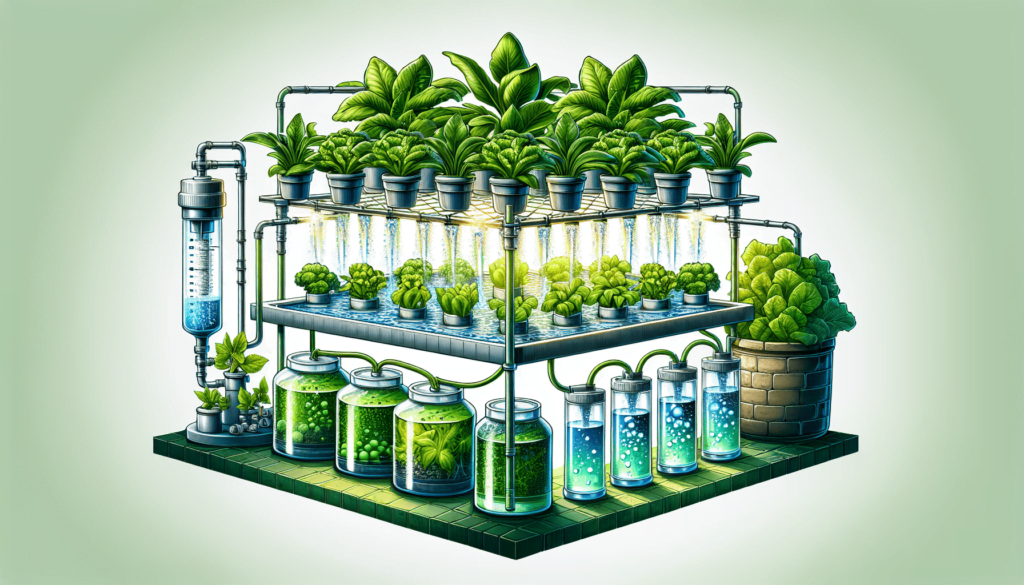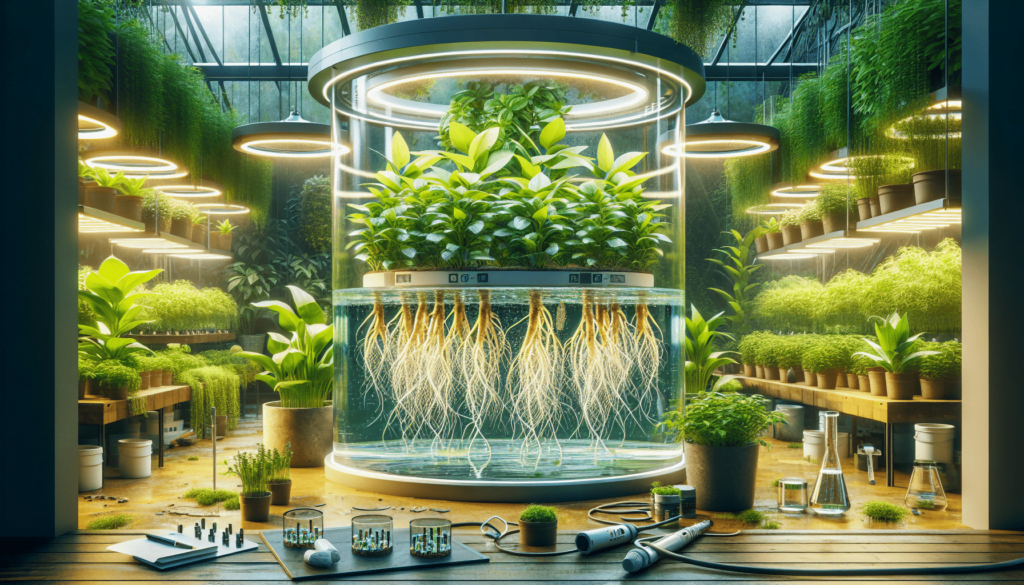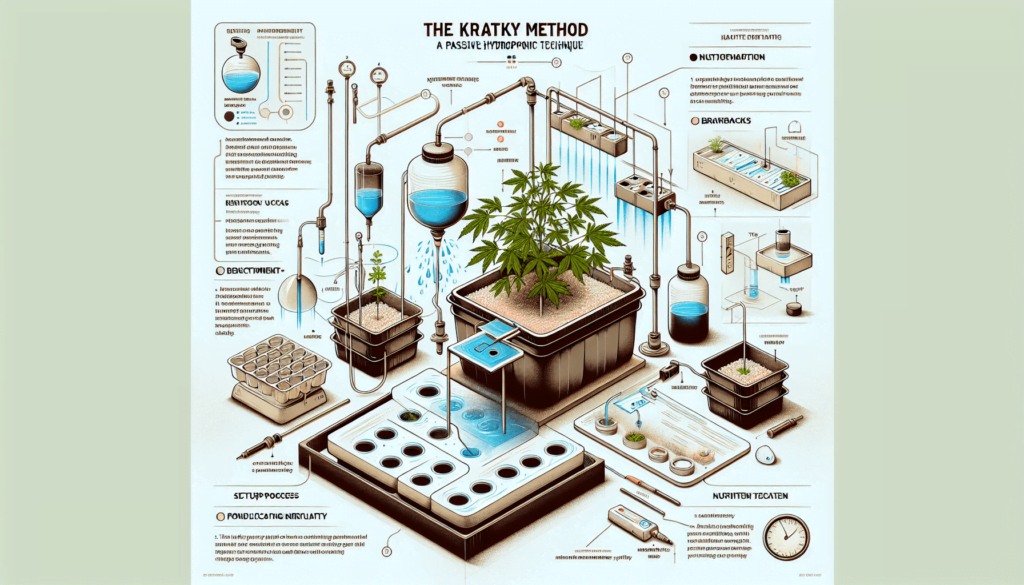In the vast world of home gardening and hydroponics, nothing brings us more joy than the magical process of cloning tomatoes. Utilizing the easy, no-fuss Kratky method, we’ll show you how to transform a humble tomato plant into a thriving, bountiful forest of juicy, red fruits. Imagine the satisfaction of impressing your friends and family with your home-grown, supernaturally abundant tomato harvest. So go ahead, roll up those sleeves and join us on this exciting journey of tomato duplication, where the garden of your dreams is merely a few simple steps away. Enjoy the fulfillment of home gardening like never before, with the joys of cloning tomatoes.
Understanding the Kratky Method
Let’s start our journey in the verdant world of hydroponics by understanding the genius behind the Kratky method. This method, named after Dr. B.A. Kratky, has revolutionized the way we think about hydroponics. But you may be wondering, what exactly is the Kratky method? Put simply, it’s a form of hydroponics that doesn’t require any electricity or air stones. Instead, it relies on a clever combination of water and air to provide nutrients for plants.
A Glimpse into the Genius of the Kratky Method
Imagine growing your plants in a pool of nutrient-rich water, where the roots dip in and out, taking what they need when they need it. And all that without the need for any intricate mechanics or expensive resources. That’s the picturesque simplicity of the Kratky method for you. But don’t be fooled, it’s a smart and efficient way to grow plants that really do thrive!
Incorporating Sustainable Gardening with the Kratky Method
The good news doesn’t stop there. The Kratky method aligns perfectly with our commitment to creating sustainable gardens. Imagine how much water and electricity you save by not having to rely on pumps or air stones. Plus, by using the Kratky method, you’re stepping into a gardening process that minimizes waste and maximizes return. How’s that for green thumb goals?
Revolutionizing Home Gardening with the Kratky Technique
Think about it. With significant savings, lower waste, and improved efficiency, the Kratky method is winning hearts and home gardens alike. If you’re after a way to grow plants at home without the fuss of traditional soil gardening, this could be the game-changer you’ve been looking for. So are you prepared to revolutionize your home gardening with the Kratky method?
The Basics of Cloning Tomatoes
Now let’s talk about the real star of the show – tomatoes. But not just any tomatoes. We’re talking about a deliciously unique process called cloning. Got your interest piqued?
Dance of the Genes: A Short Introduction to Plant Cloning
Plant cloning isn’t as complicated as it sounds. In fact, we bet some of you have unknowingly cloned a plant or two while snipping off a piece to share with a friend. At its core, cloning is about taking a piece of a plant and using it to grow a completely new plant – an exact genetic replica of its parent.
Why Clone Tomatoes?
You might be wondering, “why should I go through the trouble of cloning my tomatoes?” Well, let us count the reasons! Aside from the thrill of creating a genetic twin, cloning ensures consistency in your harvest. Loved the taste of that last tomato batch? Clone it for a guaranteed repeat of that mouthwatering flavor!
Debunking the Myths and Fears Associated with Cloning
Now, we know some of you might have a few misconceptions about cloning. Fear not, for we’re here to debunk them. Cloning isn’t about creating Franken-tomatoes. It’s simply a smart way to get more of what you love. No scary genetics just pure, homegrown, delectable tomatoes. So are you ready to join us in the exciting world of tomato cloning using the Kratky method?

Materials Required for Kratky Tomato Cloning
Just as any great recipe, your cloning harvest needs the right ingredients. And for the Kratky method, we require a few key components – the container, the clone, a nutrient mix, and ample air and light.
Choosing the Right Container
Starting with the container, it needs to be large enough to hold sufficient nutrient solution for your entire growing cycle while also providing enough room for root development.
The Essential Role of a Tomato Clone
The next key ingredient is, of course, the clone. But not just any part of the tomato will do. You must choose a healthy branch, ideally a lateral one as they often have the highest rooting potential.
Nutrient Mix: The Lifeblood of Tomato Cloning
Your nutrient mix is what will feed your clones, nurturing them into full-grown plants. It’s important to choose a high-quality mix that will support your tomato’s growth at every stage.
Adequate Air and Light: The Non-Negotiables
And finally – air and light. You see, in the Kratky method, your plants will be getting their oxygen supply from the space above the nutrient solution. As for light, it’s a no brainer – every plant needs light for photosynthesis!
Conditioning the Mother Plant Before Cloning
Yes, you read it right. Let’s get your mother plant in its best shape before we dive into cloning. A healthy mother plant means a healthy clone.
The Importance of a Healthy Mother Plant
If you feed your parent plant well, it will offer stronger branches that are well-suited for cloning. And remember, a healthier mother means healthier clones, and you know what that means – more juicy, ripe tomatoes!
How to Condition Your Tomato Plant for Cloning
Conditioning your tomato plant for cloning isn’t overly complicated. Ensure it’s receiving adequate nutrients, water, and light, making sure it’s pest-free.
Identifying a Suitable Branch for Cloning
Finding the perfect branch to clone is about selecting one that’s mature but not woody and comes with at least a couple of leaf nodes.

Steps to Cut the Tomato Clone
It’s go-time. Let’s cut that clone!
Proper Techniques for Cutting Tomato Clones
Be gentle and precise while cutting your clone. Aim to make a 45-degree angle cut below a node with a clean, sharp blade or a pair of scissors.
Where to Cut on the Mother Plant
Ideally, you should cut about a quarter of an inch below a leaf node, as nodes are often where roots tend to spring from when placed in water.
Handling and Transporting the Cut Clone
It’s important to immediately place your freshly cut clone in water to stop air bubbles from entering the stem and blocking the nutrient pathways. Handle it with care to avoid damaging it during the transportation.
Preparing your Kratky Hydroponics Container
Setting up your Kratky container is an easy and straightforward process.
Setting Up a Simple, Yet Effective Kratky Container
Your container setup could be as simple as a glass jar filled with nutrient solution, with the lid having a hole that snugly fits the base of your plant.
Ensuring Optimal Air Circulation
Remember, the air above the nutrient solution in your Kratky setup acts as the oxygen supply for your plant. So leave enough room for the roots to breath.
Adding the Nutrient Mix: Do’s and Dont’s
Adding your nutrient mix is as simple as stirring the right amount into your water. Just be sure not to make it too concentrated as it could harm your young clone.
Transplanting your Tomato Clone into the Kratky System
Now that you have your Kratky system set up and your clone ready, it’s time to introduce them to each other!
Transitioning your Clone into the New Environment
Transplanting your clone is as simple as carefully placing it into the hole you made in the lid of your Kratky system, ensuring the stem dips into the nutrient solution.
Securing your Tomato Clone in the Kratky System
Securing your clone in the Kratky system can be done using a range of methods – foam support, clay pebbles, or even a simple wick. Just remember, the goal is to keep your plant suspended in the nutrient solution, not drowning in it.
Double Checking for Rooting Space and Air Availability
It’s crucial to leave enough rooting space and air availability for your clone. Remember to regularly check if there’s any change in the root space.
Maintaining your Cloned Tomato Plant
Although the Kratky method requires minimal maintenance, monitoring your plant’s growth is key to a successful harvest.
Taking Care of your Kratky Setup
Ensure your cloned tomato plant gets the right amount of light and that there’s no leakage or contamination in the container.
Monitoring Growth: What to Look for
Keep an eye on the leaf color and stem thickness. These are good indicators of whether your plant is happy or needs some TLC.
Managing Issues: Identifying Common Problems and Their Solutions
Common issues for cloned tomatoes using the Kratky method include root rot and nutritional deficiency. However, in most cases, these can be easily solved with a bit of extra care and attention.
Harvesting your Cloned Tomatoes
After all that hard work, it’s finally time to reap your rewards!
Knowing When to Harvest
Harvesting your cloned tomatoes at the right time is crucial. You want them to be bright, ripe, and full of flavor.
Best Practices for Harvesting Cloned Tomatoes
When it comes to harvesting, do so gently to avoid damaging your plant. And be sure to store them properly to maintain their freshness for as long as possible.
Utilizing Post-Harvest: Ideas to Inspire
Well, eating is always an option. But don’t you think about turning your harvested tomatoes into seeds for future plants? Now, how resourceful is that?
Feedback Sharing: Building a Clone-friendly Gardening Community
Remember, gardening is not a solitary activity.
Sharing Your Tomato Cloning Journey
Share your experiences, the highs, and the lows, with the rest of our community. After all, we’re all here to learn and grow together.
Engaging in the Community: Learn, Share, Grow
By engaging with our thriving community of fellow gardeners, not only can you learn from their experiences, but you can also share your wisdom with them.
A Call to Action: Start Cloning and Elevate Your Home Gardening Game!
Let’s create a home gardening revolution, one cloned tomato at a time! Start cloning your tomatoes using the Kratky method today, and let’s harvest our way to abundance, sustainability, and joy!
Related Products…
-
Product on sale
%22%20transform%3D%22translate(.6%20.6)%20scale(1.17188)%22%20fill-opacity%3D%22.5%22%3E%3Cellipse%20fill%3D%22%23fff%22%20rx%3D%221%22%20ry%3D%221%22%20transform%3D%22matrix(45.2421%20-71.0073%2042.35667%2026.98743%20210%20230.6)%22%2F%3E%3Cellipse%20fill%3D%22%23897632%22%20rx%3D%221%22%20ry%3D%221%22%20transform%3D%22matrix(100.2006%203.87934%20-4.93672%20127.51216%20129%2060.9)%22%2F%3E%3Cellipse%20fill%3D%22%23c9c7e4%22%20rx%3D%221%22%20ry%3D%221%22%20transform%3D%22matrix(52.09857%208.9809%20-17.3286%20100.52399%2047%20250.4)%22%2F%3E%3Cellipse%20fill%3D%22%23d9794f%22%20cx%3D%22206%22%20cy%3D%2233%22%20rx%3D%22112%22%20ry%3D%2245%22%2F%3E%3C%2Fg%3E%3C%2Fsvg%3E) Heirloom Hot Salsa Seed Packets – Grow 8 Varieties including Habanero, Jalapeno, Serrano Peppers, Roma Tomatoes, San Marzano Tomatoes, Cilantro, Green Onion, and Tomatillos -…Original price was: $15.95.$14.95Current price is: $14.95.
Heirloom Hot Salsa Seed Packets – Grow 8 Varieties including Habanero, Jalapeno, Serrano Peppers, Roma Tomatoes, San Marzano Tomatoes, Cilantro, Green Onion, and Tomatillos -…Original price was: $15.95.$14.95Current price is: $14.95. -
 Large Cherry Tomato Seeds – 250 Count | Non-GMO Fresh Garden Seeds$4.80
Large Cherry Tomato Seeds – 250 Count | Non-GMO Fresh Garden Seeds$4.80 -
 Rare Vegetable Heirloom Seeds: 100 Indoor Cherry Tomato Dwarf Red and Yellow Seeds$7.59
Rare Vegetable Heirloom Seeds: 100 Indoor Cherry Tomato Dwarf Red and Yellow Seeds$7.59
Forum
Got something to share or a question to ask? Jump in and start a conversation! Whether it’s tips, advice, or just sharing your experiences, we’d love to hear from you. Don’t be shy—your input could inspire or help someone else!- This forum has 1 topic, and was last updated 10 months, 2 weeks ago by .
- Topic
- Voices
- Last Post
- You must be logged in to create new topics.





